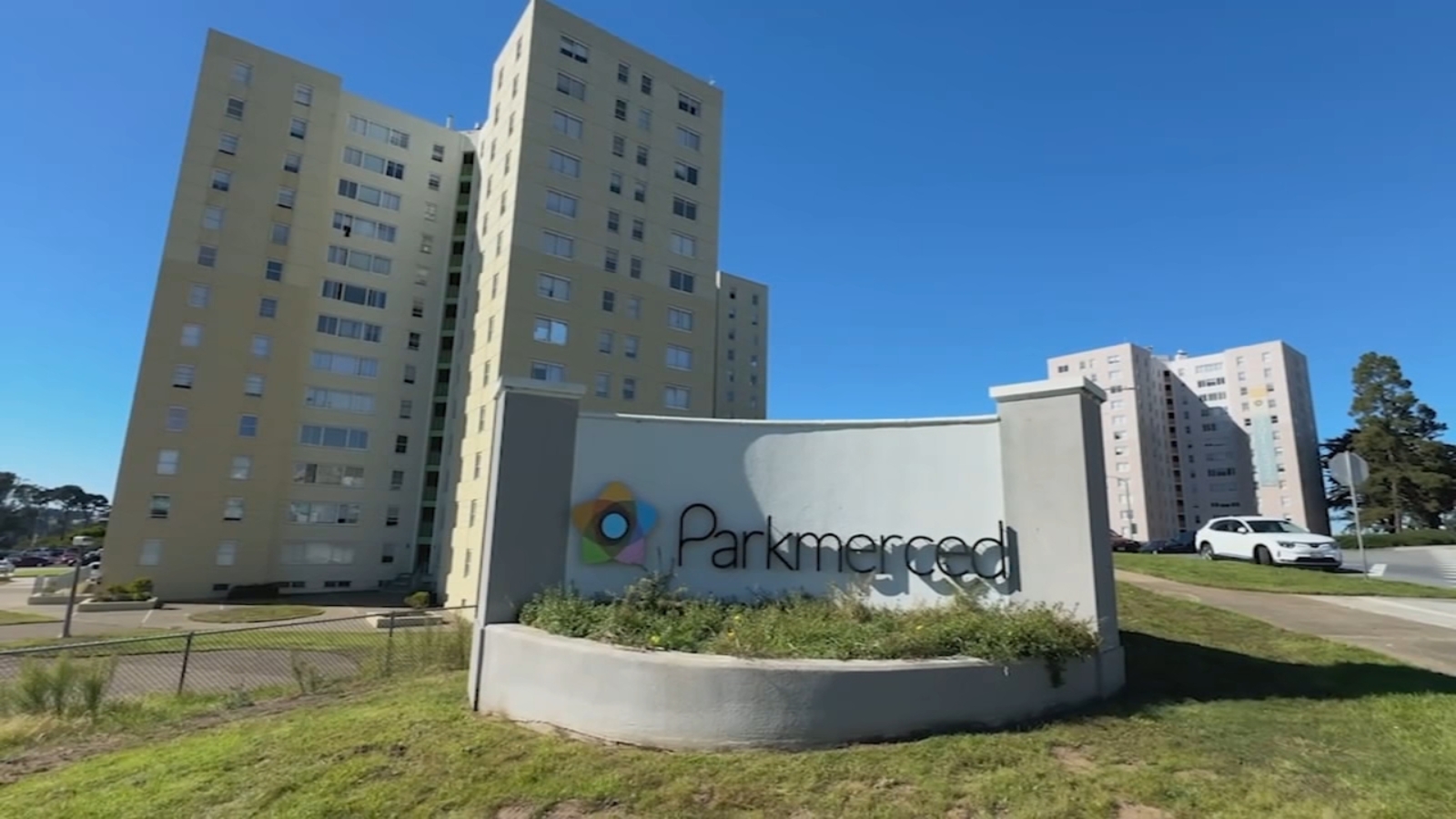SAN FRANCISCO (KGO) — The state of California is demanding that the city of San Francisco build 82,000 residential units in the next five years.
The city is way behind in meeting that request. While new zoning laws are expected to help get closer to that target, there are megaprojects, like Parkmerced, that have been stalled for years.
San Francisco’s Parkmerced is a ginormous example of broken promises. It is 14 years in the making; the San Francisco Board of Supervisors approved the megaproject in 2011.
“Of course, they’ve made promises, but they also ruined the neighborhood,” said Mohammed Husseini, a longtime Parkmerced resident.
He and his brother have each lived here for more than 30 years.
MORE: New Sophie Maxwell Building to open, offering affordable, essential housing for middle class SF
The developer intended to triple the size of Parkmerced by tearing down 1,500 townhouses and replacing them with four and five-story buildings. Despite all the approvals, construction never began. With developers unable to refinance the loan, the property was placed under receivership in 2025.
Today, a San Diego-based company has control over the property, hoping to someday redevelop its 152 acres.
Karim Husseini said there has been little communication with residents.
“Minimum. Notices that we received that the management has changed to a new one, that’s it. Now we are left in a situation where we are not really aware of what is happening,” Husseini said.
There have been other broken promises in San Francisco.
MORE: SF Mayor Daniel Lurie introduces $40 million privately-funded initiative to revamp downtown
In 1997, then-Mayor Willie Brown spearheaded a campaign to build a mall and a new stadium for the San Francisco 49ers, which would bring jobs to the Bayview-Hunters Point neighborhoods. Voters even went with it, approving a $100 million bond. But when the 49ers’ owner at the time, Eddie DeBartolo, was involved in a scandal, the team’s new leadership went elsewhere — to Santa Clara, where they built Levi’s Stadium using public and private monies.
So back in San Francisco, there was no mall and no stadium. It’s been 10 years since Candlestick was demolished.
Even today, with the promise of a new, larger and revised redevelopment plan, the work has been all but stagnant. The developer, FivePoint Holdings, is now promising the project will start in early 2026 and eventually produce more than 7,000 housing units.
Let’s look at other current megaprojects: 30 Van Ness, which was supposed to be a 47-story mixed-use tower with 333 condos, is now on hold. The lot on First Street and Mission in the SOMA area was supposed to be San Francisco’s second-tallest building. It , too, was supposed to be a mixed-use project until the developer ran into financial issues. There are reports that a new development company will step in.
“These large projects take so much inertia to get going, that when you have to stop them, it requires double the effort to keep it moving,” said Enrique Landa of Associate Capital, the developer of the Potrero Power Station.
MORE: New skyscraper could replace Golden Gate University site in downtown SF, reports say
There are megaprojects that have been successful, like Mission Bay and, more recently, Power Station in the Dogpatch neighborhood. Just last week, a 105-unit building for the middle class was inaugurated and set to open in November. UCSF is also building a Cancer Center here. The development is supposed to expand to include more housing, a hotel and a waterfront park.
Landa said, as a developer, you have to be flexible.
“You don’t envision a global pandemic. You don’t envision all of the change that happens from work from home, that changes that have happened politically. And I think the goal of a project that works is a project that can work in every cycle,” Landa said.
Megaprojects carry a big risk. So, should the city focus on delivering more smaller projects to fill the void, like an affordable housing project on Stanyan Street in the Haight-Ashbury neighborhood? It’s set to deliver 160 units.
Sam Moss of the Mission Housing Development Corporation says, “Why not have both?”
MORE: Company that runs $700 a month sleeping pods in SF could face eviction for unpaid rent
“We’re not going to get out of this self-inflicted housing crisis that we’ve been perpetuating on future generations for the better part of 50, 75 years without being open to all kinds of developments, megadevelopments, 2-unit infill on what used to be a single-family home, and everything in between,” Moss said.
The state and city are now making it easier for developers to obtain permits in a timely manner.
La Maravilla development in the Mission is one project that hopes to have three buildings. That includes permanent, supportive housing and housing for families and seniors.
But in most of these cases, the main obstacle is money. High interest rates, construction costs and tariffs are expected to make investors more cautious.
Still, Moss said, given the state’s pro-housing movement, San Francisco should meet its housing quota.
“We’re going to get there. C’mon, what’s the fun in not being optimistic?” Moss said.
Copyright © 2025 KGO-TV. All Rights Reserved.


